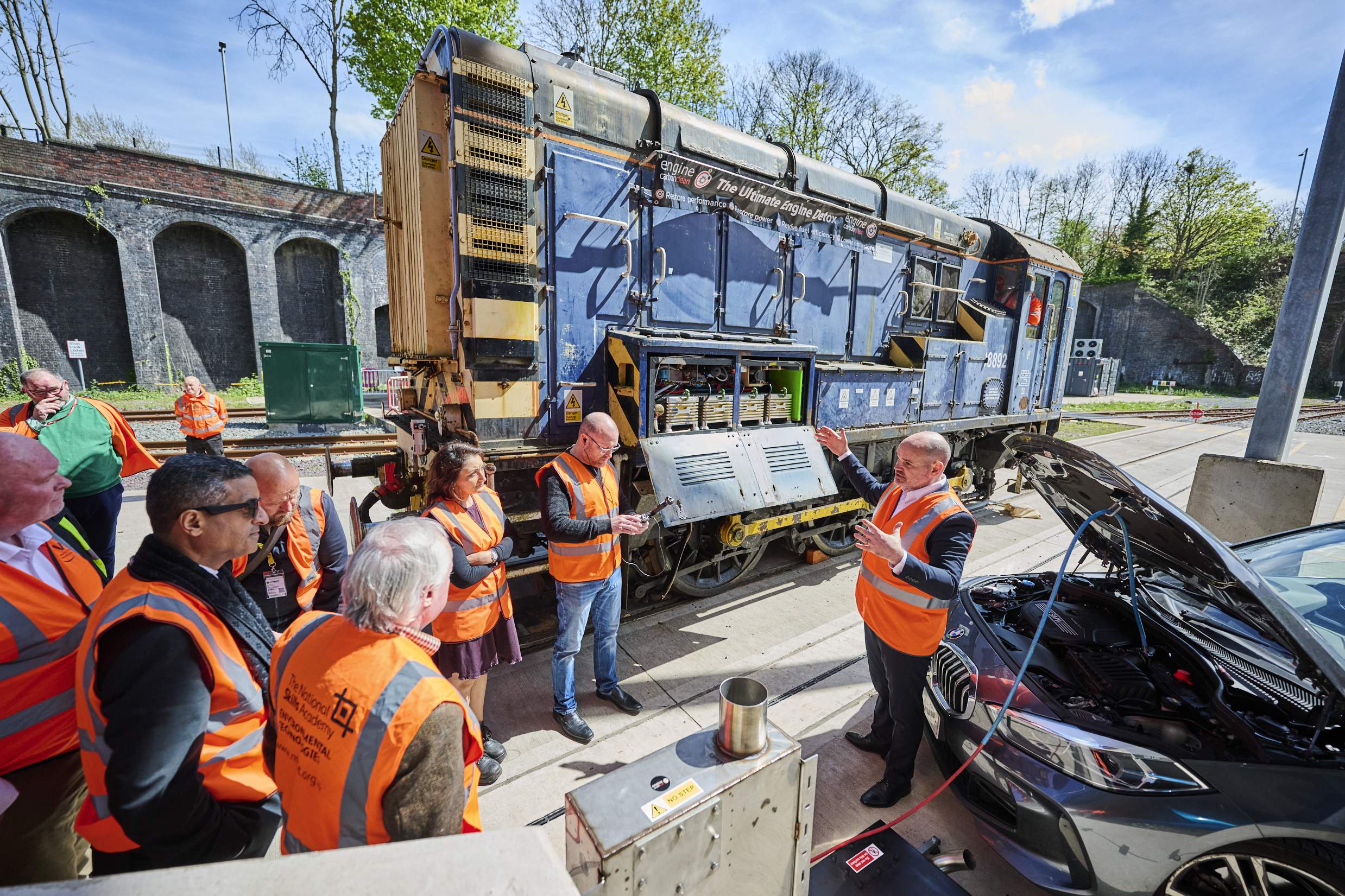In August, BCIMO introduced its framework for innovation; a model with four interdependent cogs – representing its core areas of focus – that must turn together for new, emerging and existing industries to flourish. Over the next two months, each cog will be explored in detail, and this week focuses on challenges and opportunities within rail and a new model developed by BCIMO to facilitate innovation.
The rail sector in the UK faces a unique set of challenges and opportunities due to a combination of factors, including its long history and development over time, recent societal impacts and the current economic conditions, and a succession of government policies and priorities. And many are intertwined, adding even more complexity. For example, much of the rail infrastructure across the country is old and needs significant upgrading or replacement, but this has a significant cost implication, and whilst cross-country projects such as high-speed rail and regional initiatives such as in the north of England could address aspects of this, they remain financially uncertain and somewhat controversial.

Cost is also a factor operationally, with the complexity of multiple operators and overlapping contracts resulting in inefficiencies, alongside different technologies and systems impacting on interoperability. Many services are now operating at or near full capacity, yet expansion is difficult due to both the logistics and cost of infrastructural development, and effective inter-operator data to manage passenger flow. And whilst passenger numbers have rebounded following the pandemic, cost to them in high ticket prices compared to those in the EU and disruption from workforce strikes, has resulted in increased demand for improvements.
Yet change is happening, with the new national government and regional administrations recommitting to overhaul transport systems, including public transport and thus including rail, to be ‘fit for purpose’ for the 21st century. There is traction beyond passenger services into freight, and a real focus on interconnectedness, multimodal transportation across both, so with a drive for future development to encompass rail – heavy, light and very light systems – alongside other public forms and indeed private, from vehicles across the spectrum to micromobility. And with the environment high on agendas, both in terms of coping with inevitable change and mitigating transport’s own impact there will be increasing focus on ensuring it becomes ‘greener’.
Innovation will be absolutely essential to both facing these challenges and exploiting these opportunities within the rail industry, and whilst there is significant scope for intrapreneurship, within organisations and their existing supply chains, much of the blue-sky innovation could equally come from new entrants to the marketplace. Potential is broad, from groundworks to rolling stock to operations to services, and could come from rail-specific innovators, cross-sector application or diversification, and from individual innovators, formal partnerships or specific collaborative projects, with additional to combine product and service portfolios.
The Clean Futures Accelerator is indicative of this with a diverse range of innovations showcased within both Cohort 1 and Cohort 2.




But a further challenge within the sector is industry exposure to new innovation and investment often required to facilitate that exposure via demonstration and/or post-procurement supply and scale up, and so, in addition to the provision of technical and commercial support for innovators developing technology for rail, the Clean Futures team at BCIMO has been working on their own development of a focused model in which this can happen.
The Commercial Investment Hub is an innovation framework designed to accelerate the commercialisation of rail and transport innovations through a 3-way partnership model that unites Industry, Innovators, and Investors. By bringing these three critical players together, the Hub doesn’t just speed up individual innovation cycles – it synchronises them, ensuring that solutions are developed, funded, and adopted in parallel. This approach eliminates traditional barriers, shortens time-to-market, and maximises success rates for transformative projects.
The Hub is being piloted as part of the current Clean Futures Programme, focusing on overcoming challenges for high-TRL (Technology Readiness Level) solutions and improving speed-to-market. Outcomes will be assessed through secured investments and contracts, the impact on the innovation cycle, and the potential for scalability in future industry adoption. Findings from the pilot will be used to refine the model for its broader use.
How it works…
- Industry identifies real-world challenges and serves as the ‘route to market,’ committing to adopt and integrate successful innovations.
- Innovators create targeted solutions, refining their products with industry guidance to ensure they meet market needs.
- Investors provide the capital needed to scale these solutions, reducing risk by backing projects that already have industry validation and demand.
Key benefits…
- Accelerated Commercialisation: With all parties working in synergy, innovations move from concept to market readiness faster than traditional models.
- De-risked Investment Opportunities: Investors gain confidence from an aligned ecosystem where both need, and adoption are pre-validated.
- Synergistic Collaboration: The integrated model promotes strong partnerships, ensuring that industry, innovators, and investors are all strategically aligned and mutually invested in the success of each project.
Participation…
We welcome participants to the Clean Futures Commercial Investment Hub pilot from across the 3-way partnership model – please Contact Us for more information:
- Innovators: The pilot is primarily focused on our Clean Futures Accelerator participants, however, if you are an SME or other accelerator looking for similar support, we can discuss funding options.
- Industry Partners: If your organisation is facing decarbonisation challenges and can serve as a route to market by adopting and integrating solutions developed through the Clean Futures Accelerator programme.
- Investors: If you can provide the capital required to scale innovations and are seeking opportunities that already have industry validation and market demand.

Naomi Arblaster, Head of SME Development at BCIMO and project lead on development of the Commercial Investment Hub, said:
“The Hub represents a bold step towards accelerating high-TRL solutions and fast-tracking innovations to market. By overcoming the barriers that slow down progress, we’re shaping a future where sustainable technologies thrive.
Success will be measured not just by investments and contracts secured, but by the ripple effects on the innovation cycle and the scalable potential for future industry adoption.
The insights gained from this pilot will serve as the blueprint for refining and expanding funding systems, ensuring that tomorrow’s breakthroughs can be deployed more efficiently and effectively across industries worldwide.”
For more information on BCIMO or the Commercial Investment Hub, please visit the BCIMO website or click Contact Us to make an enquiry / sign up to our mailing list.

BCIMO is a not-for-profit Research and Technology Organisation (RTO) and operator of the Very Light Rail National Innovation Centre (VLRNIC), a unique, world-class centre for rail innovation based in Dudley in the West Midlands.

Google Map Location: BCIMO
what3words Address: ///shades.glue.tile
Sat Nav: DY1 4AL
Postal Address: BCIMO, Very Light Rail National Innovation Centre, Zoological Drive, Dudley. DY1 4AW
Email: info@bcimo.co.uk
Phone: 07769 586893
